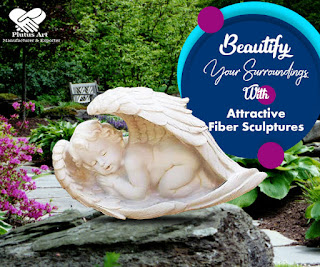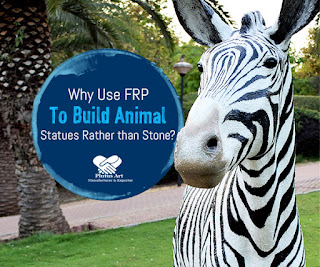Fiberglass, The Ideal Green Material For Today And Tomorrow
It
is often the case that aiming for aesthetics and addressing the
concerns of durability, variety, cost, and flexibility do not quite
go hand in hand. This is especially apparent in the case of statues.
It is interesting to note that when we visit gardens, theme parks,
museums, or any other open or closed spaces, the sight of a statue
comes as an added attraction. Just imagine taking your kids to a
theme park with a large dinosaur statue. The very sight of such a
statue for sure would make your kids ecstatic and satiate their
longing for the world they have read about but seldom seen. However,
the aesthetic appeal of the statues seems to increase when they
appear to merge with the surroundings as opposed to sticking out like
a sore thumb. For example, the galvanized statue of an animal in a
natural park would look out of place for its inability to appear as a
part of the surroundings.
How the type of material matters?
Although the skills of an artist
make a statue attractive, the type of material used can often limit
the scope of an artist. For example, carving intricate patterns on
stone or galvanized steel can be difficult compared to clay. The
intrinsic property of a material in terms of flexibility or the
ability to lend itself to any form can mean the difference between
achieving realism or falling short of it. Thus, the diffused or
flexible state of clay makes it easier for an artist to give it any
shape vis-a-vis the solidity of a stone. This is not to suggest that
statues carved out of stones do not have intricate patterns, for
there are plenty of examples around us where artists seemed to have
made the stone ‘talk’.
The new kid on the block –
fiberglass
This new age material made of molten
glass threads and resin gel among others has brought about a
revolution of sorts in building statues or objects of many shapes and
sizes. The ability of the material to mould itself into any form or
size makes it a favourite with artists. Be it carving a comic book
character, a mythological figure or any inanimate object, fiberglass
can make it look real. Besides, the material comes with plenty of
advantages as well.
-
Since there is no iron content and the material being sealed by a resin gel coat, there is no chance for corrosion or rust formation.
-
Available in plenty of colours, fiberglass statues or any other fiberglass made objects do not need to be repainted later as they come with a resin rich gel coat colour.
-
Any graffiti or smudges on these statues can be easily washed/wiped clean
-
Custom built for any size or shape and the ability to merge with the surroundings enhance the statues’ aesthetic appeal.
-
No effect on account of their exposure to elements (rain, snow, heat, cold and moisture) and a corrosive environment such as salt water, acids, alkali, humidity etc.
-
Durable, clean, strong, stable and quick to install.
-
Environmentally clean as the process of making the statue does not involve the use of harsh chemicals.
Conclusion
Statues made of fiberglass material
bring their own aesthetics value and advantages. They are the ideal
‘green’ material of today and tomorrow.





Comments
Post a Comment